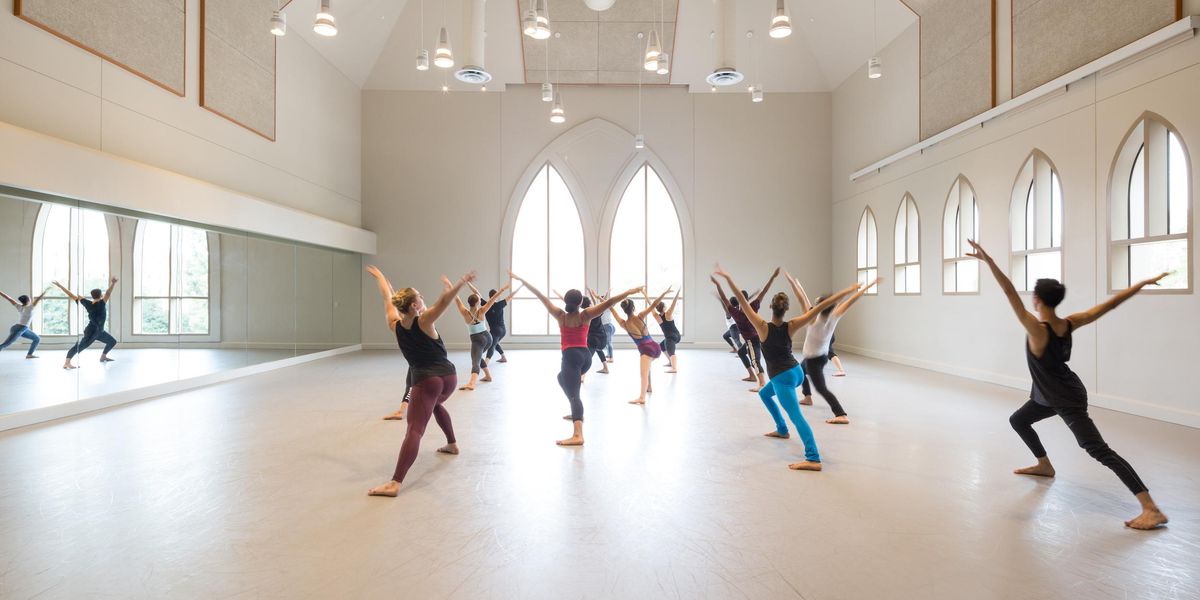Music in Motion
Student choreographers and musicians get collaborative.
You might think only professional dancers and choreographers get to perform with a full orchestra, or commission scores for their compositions. But some college programs offer opportunities to work directly with music students, giving dance majors a chance to learn from artists outside their department. “We are moving into an era where the lines between disciplines are blurred,” says Cathy Young, director of the dance division at The Boston Conservatory. “Learning how to collaborate is an invaluable experience in preparing for success as a 21st-century artist.”
A doctoral student from the Jacobs School of Music accompanies IU dancers. Photo Jeremy Hogan, Courtesy IU.
Indiana University
Bloomington, IN
Degrees offered: BFA and minor in dance through the department of theater, drama and contemporary dance
No. of majors: 50–60 total
Collaborative coursework: In a required course called Choreographic Projects, dancers work with artists in various departments, including composers from the Jacobs School of Music. Student musicians also accompany many dance concerts and musicals on campus, and are often involved in the annual concert produced by senior dance majors.
Music for dancers: All majors take music theory, and some study voice.
Additional opportunities: Each year, a group of student composers and dancers spend eight months collaborating on short original works, which they present at a local theater. A student-run dance group and choreography lab also offers chances to work with musicians on independent projects.
Stephens College
Columbia, MO
Degree offered: Three-year BFA in dance
No. of majors: 15–20 total
Collaborative coursework: Each year, Stephens choreographers collaborate with composers from University of Missouri’s Mizzou New Music Initiative to create original works. The process culminates in a student-produced performance accompanied by the New Music Initiative orchestra. This is the capstone project for the dance major.
Music for dancers: Dancers are required to earn three credits in music through music theory, piano or voice lessons, or music history.
Additional opportunities: Stephens recently expanded its interdisciplinary offerings by introducing a dance-for-camera course during the summer.
TBC dancers in Francesca Harper’s Maladjusted Pride. Photo by Jim Coleman, Courtesy TBC.
The Boston Conservatory
Boston, MA
Degree offered: BFA in contemporary dance performance
No. of majors: 130 total
Collaborative coursework: In the school’s Junior Composition course (required for majors who choose the composition-and-improvisation emphasis), student choreographers create an original work with a composer from the music division or Berklee College of Music, which is merging with TBC. Many of the school’s dance performances are accompanied live by music division students—sometimes a full orchestra.
Music for dancers: Dance majors are required to take courses in Western music, time and rhythm, and voice. They can take additional music courses at Berklee.
Additional opportunities: Dance students have choreographed for music videos, participated in improv jams with music students and been part of the informal student-run performances that take place regularly at Berklee.




